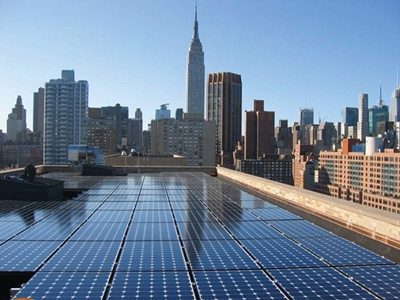Over the weekend I read a blog post by author Nicholas Carr describing what he calls the hierarchy of innovation.
Lately I’ve been thinking a lot about innovation, especially about how it might spread through the global energy system. I’m especially interested in how entrepreneurs and new technologies may create disruptive innovation within the system and what that’s likely to look like.
Carr’s blog is a little off that topic, but it did get me thinking about the underlying drivers of innovation. The article is essentially an attempt to explain and to some extent lament what he and others perceive as stagnation in innovation in the last century. Carr describes what he refers to as the Hierarchy of Innovation, which is loosely analogous to Maslow’s hierarchy of needs. As Carr puts it:
“The focus, or emphasis, of innovation moves up through five stages, propelled by shifts in the needs we seek to fulfill. In the beginning come Technologies of Survival (think fire), then Technologies of Social Organization (think cathedral), then Technologies of Prosperity (think steam engine), then technologies of leisure (think TV), and finally Technologies of the Self (think Facebook, or Prozac).”
I’m OK with the hierarchy concept and think it’s a fine first-order mechanism to understand the underlying social values driving innovation at any given stage in civil development.
However, I think much deeper drivers are worth considering. Obviously, the one with which I’m most familiar relates to the ability of a civilization to harness energy to drive the economic wealth and ultimately wealthy lifestyles, which push them up what I’ll call Carr’s first-order innovation pyramid.
Most of the 19th and early 20th century innovations highlighted in the article relate directly to or result directly from a radical revolution in humankind’s ability to harness energy for its own benefit. Prior to the industrial revolution, energy for economic production came primarily from livestock and human labor. By the mid-19th century, Western civilization was pushing on the very capacity of those energy-producing technologies to sustain the economic growth and wealth creation demanded by its societies, setting the stage for the Industrial Revolution.
With the Industrial Revolution, humankind harnessed the power of fossil fuels and unleashed an entirely new paradigm of production and economic wealth generation. This created the energy production “headroom” that set the stage for the massive change in human capabilities in the early to mid-20th century. In fact and quite literally, without the energy technologies and production capacity we developed 100-150 years ago, we never could have escaped the bounds of Earth and started our exploration of the solar system. However, sometime mid-century as we achieved new heights of global economic prosperity, we stopped innovating on energy and moved up Carr’s innovation hierarchy to focus on leisure and self.
Presently, 125 years later, civilization is still reliant on the core energy production technologies created in the Industrial Revolution. Economies with the mastery and control of those technologies enjoy almost unlimited access to abundant and cheap energy, and it is in those societies that we see the shift in innovation so lamented by Carr in his article.
Yet the current energy paradigm, not so unlike the one based on livestock and human power, is fundamentally based on commodity fuels and highly fragmented production and distribution industries that can be owned and controlled (usually to their own benefit) by anyone with the resources and power to do to so. As such, the paradigm is defined by energy haves and have-nots; and the energy have-nots are consistently plagued by crushing poverty and disease. This disparity is growing rapidly. On a global basis, this imbalance is likely coming to a critical point, and, like the mid-19th century, the stage is formally set for another innovation in energy production, one that frees us from the burdens and challenges of fossil fuels and unleashes another unprecedented transformation in economies and ultimately the human condition.
So in the end, I’m still left pondering innovation in the energy system. I can’t help remembering the grade school axiom that “necessity is the mother of invention.” Carr’s pyramid is interesting and maybe a cynical comment on the modern developed world, but to me its not that complicated. If he and his peers want to refocus innovative energy on Technologies of Prosperity, their time may be better served by exploring the deeper issues than simply describing the problem.
Ned L. Harvey is chief operating officer of the Rocky Mountain Institute. Reproduced with permission.










